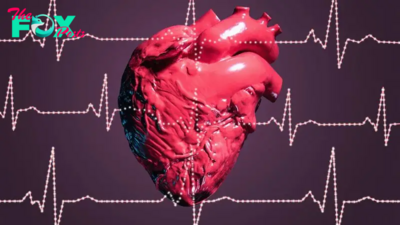Health
How fast can antibiotic resistance evolve?
Antibiotic resistance is one of the biggest global health challenges. Our most potent antibiotics become less effective as bacteria mutate and develop new defense strategies against these drugs. So, how fast can bacteria develop antibiotic resistance?
Although it depends on the species of bacteria and many other factors, "essentially it can be instantaneous to several days of evolution," Mark Blaskovich, a medicinal chemist and co-founder of the Centre for Superbug Solutions at The University of Queensland in Australia, told Live Science. "Selection pressure that leads to new mutations that are able to provide resistance can happen in one generation, or at the point of doubling."
Some bacteria, such as Escherichia coli, could divide or double every 20 minutes. Because they reproduce so rapidly, they tend to pass on more genetic changes during each doubling compared with more complex organisms, such as humans, whose cells divide roughly every 24 hours. That means that a mutation that helps the bacteria evade antibiotics can be passed on to their offspring or others in the population in that amount of time, Blaskovich said.
The likelihood of developing antibiotic resistance also depends on the type of bacteria and antibiotics. Many antibiotics need to enter the cells to be effective. Because of that, Gram-negative bacteria, which have an outer cell membrane, tend to be more resistant than Gram-positive bacteria thanks to the added layer of protection.
In 2016, researchers at the Technion-Israel Institute of Technology and Harvard Medical School filled a table-sized Petri dish with E. coli bacteria and the antibiotic trimethoprim, which normally kills bacteria that cause urinary tract infections. They divided the massive Petri dish into nine sections, with antibiotic concentrations in each section ranging between zero and 1,000 times the lethal dose for E. coli.
Related: Dangerous 'superbugs' are a growing threat, and antibiotics can't stop their rise. What can?
The scientists found that in just 11 days, the entire population had acquired mutations that made it resistant to even the highest antibiotic concentration tested in the experiment.
-

 Health48m ago
Health48m agoDoctor’s bills often come with sticker shock for patients − but health insurance could be reinvented to provide costs upfront
-

 Health6h ago
Health6h agoHow Colorado is trying to make the High Line Canal a place for everyone — not just the wealthy
-

 Health16h ago
Health16h agoWhat an HPV Diagnosis Really Means
-

 Health21h ago
Health21h agoThere’s an E. Coli Outbreak in Organic Carrots
-

 Health1d ago
Health1d agoCOVID-19’s Surprising Effect on Cancer
-

 Health1d ago
Health1d agoColorado’s pioneering psychedelic program gets final tweaks as state plans to launch next year
-

 Health2d ago
Health2d agoWhat to Know About How Lupus Affects Weight
-

 Health5d ago
Health5d agoPeople Aren’t Sure About Having Kids. She Helps Them Decide



























